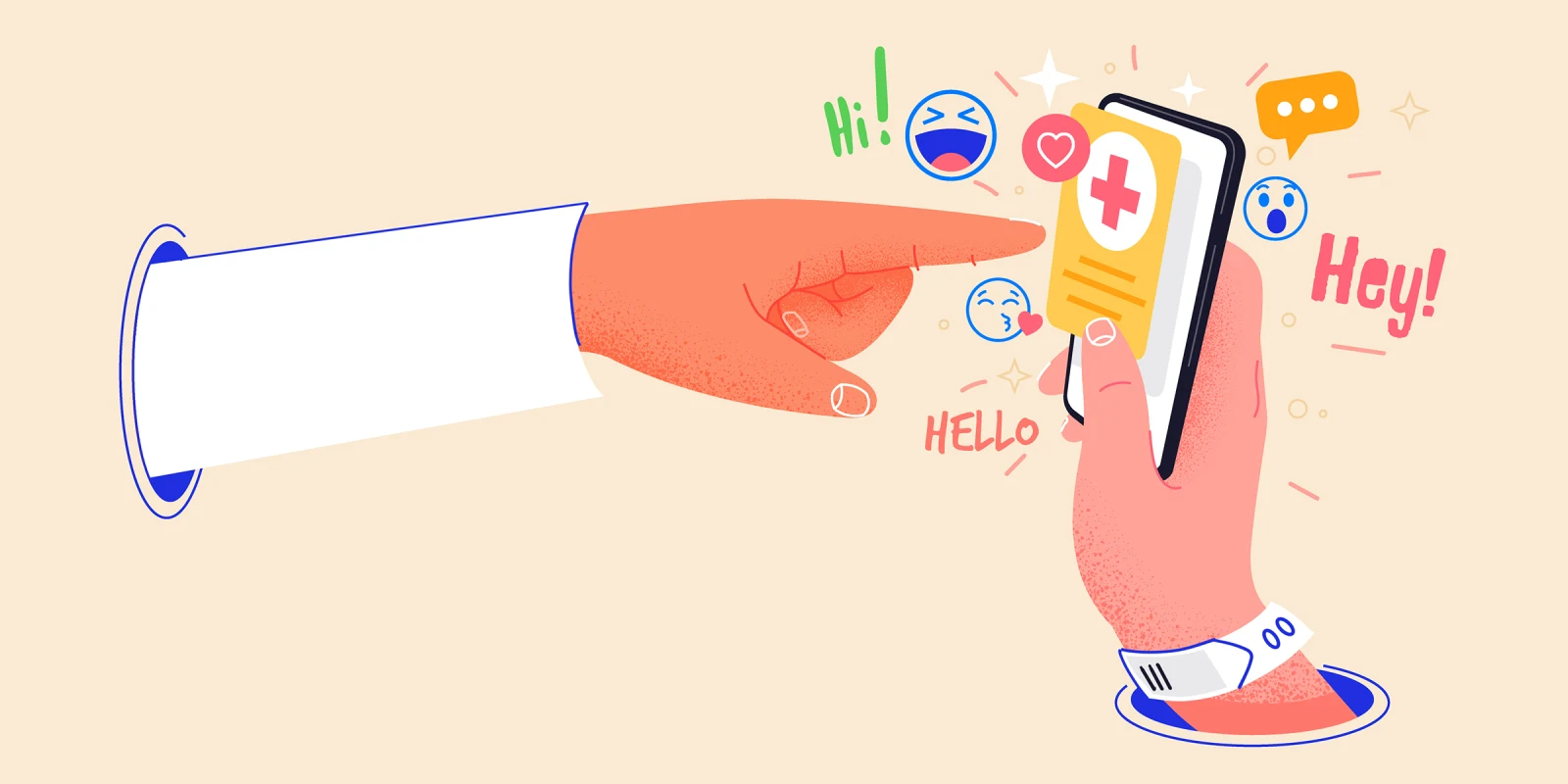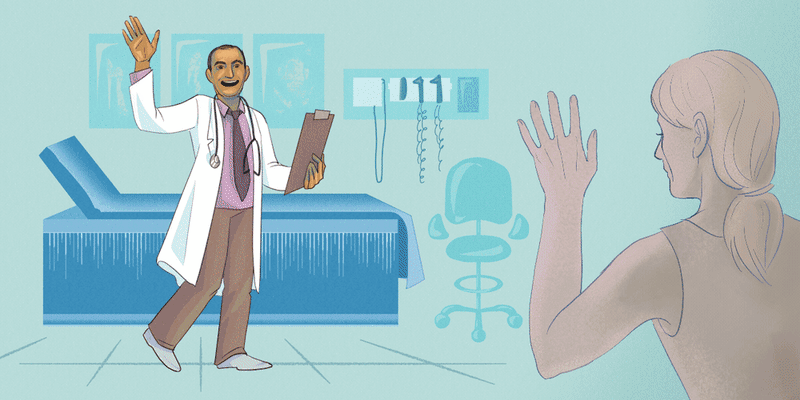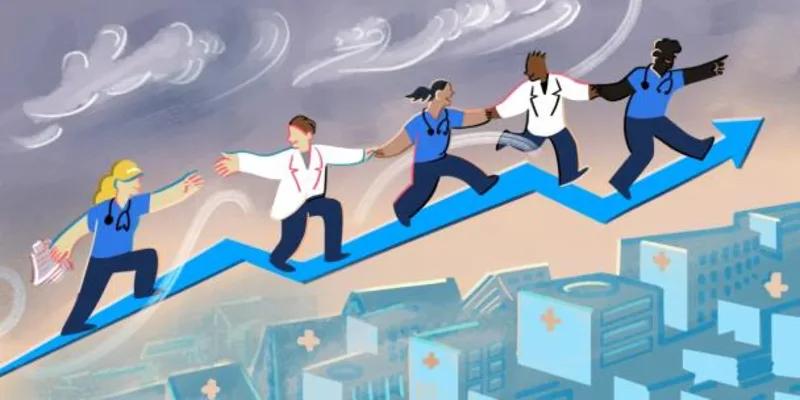Effective communication in health care is critical to achieving the best patient outcomes. It takes skill to seamlessly and appropriately blend honesty, clarity, confidentiality, comfort, and, when needed, humor, and encouragement. Emoji, a unique additional visual communication tool, might help enhance these patient-clinician interactions. Indeed, in a recent Doximity poll, 56% of clinicians voted yes to the question, “Should clinicians use emoji in a professional setting?”
With more than 3,800 votes on the poll, responses from Doximity members were nuanced. Many clinicians are concerned that emoji may seem unprofessional or confuse some patients. Dr. Clinton Pickett, orthopaedic surgeon, shared that “Positive emoji are OK, but negative emoji found in your chart during discovery for some complaint or lawsuit may cost dearly.”
Still, more than one-third of clinicians see the benefits of emoji use amongst colleagues. Dr. Tommy Korn, ophthalmologist, shared that he often utilizes emoji with the clinical care team staff and other physician colleagues in his medical group. “Our current society is dominated by negativity and anxiety given the pandemic. Any chance I can to convey upbeat energy to colleagues is like handing a glass of ice water to a person who has just crossed the desert. Positive, happy emojis are my way of conveying gratitude to my teammates and patients. It’s all about sending good vibes to the human race.”
In addition, some clinicians have been using emoji with patients as well as colleagues and feel that it helps them connect — and empathize — with them on a deeper level. About 19% of clinicians who voted in the poll said that they would use emoji with patients as well. Dr. Korn remarked that “[Emoji] deliver gratitude 🙏, empathy 😊, and kudos 👍. My patients 💛 love the positive messages.” Geriatrician Dr. Joshua Schor echoed this sentiment: “Emoji literally allow us an inventive, and usually positive, way to connect with our patients. I [used to] give out my email … and often found the patients loved the really positive or empathic responses, and emoji have become a part of the verbal landscape.” Dr. Schor also believes that using emoji may help with online reviews. Dr. Korn agrees, and provides examples. “Which one do you think is more popular with my patients? It’s the one with the emoji. I have no doubt it helps my online reviews.”
There are many barriers to effective communication in health care, and including emoji may be particularly beneficial for young patients, patients with disabilities, and patients with limited English proficiency. The idea of a visual language in medicine has historical precedent: The Wong-Baker Faces pain scale has been a long-standing tool to help pediatric patients communicate their level of pain. OB/GYN/Maternal-Fetal Medicine specialist Dr. Diana Rodriguez commented, “I think that anything that can help us communicate more effectively with patients is acceptable. How is this any different than those [Wong-Baker] faces we used for pain assessment? Tone can be misread so often in email.”
Still, many remain apprehensive about the use of emoji in medicine. At least 34% of poll voters believe that clinicians should definitely not use emoji in a professional setting. The potential to appear unprofessional, differences in technology, and a lack of standardization were top concerns amongst clinicians. Dr. Ann Secord, retired pathologist stated, “The biggest problem I’ve found with emoji is one never knows what sort of software the recipient has. I have sent an emoji to my husband at times and found out his inferior software at the time translated the picture into a series of bizarre wingding type figures, creating obvious confusion. I can only imagine what a patient might interpret such a message [to mean].” Dr. Schor considered the types of online patient contact. “Most of their patient contact will be through portals which often eliminate emoji,” he said. “With increased use of telehealth, there may be some flexibility here if physicians push for that.”
What’s more, younger clinicians are significantly more likely to advocate for emoji in health care. Many are quick to consider this a simple generational difference, but Dr. Schor thinks that physicians could lean on their younger colleagues to learn how to best use emoji. “I don’t think formal training in emoji would be helpful, or doable for practicing physicians, though if they can rassle up a teenager, that might help; our younger digital-native physicians may be more like teenagers in their familiarity and fluency in emoji,” he said.
Dr. Shuhan He, an emergency medicine physician and a leader in the push for the use of emoji in health care, noted in an interview, “It’s tempting to dismiss emoji as a millennial fad, but they possess the power of standardization, universality, and familiarity, and in the hands of physicians and other health care providers, could represent a new and highly effective way to communicate pictorially with patients.”
A notable difference in willingness to use emoji is the one between physicians, NPs, and PAs. Across the professions, physicians were more inclined to use emoji. Though it's unclear how this distinction may affect the integration of emoji in medicine, it raises the question: Should communication etiquette differ depending on profession? In the end, all will be serving patients.
The overall clinician community is nearly split on the use of emoji in a professional setting, but the adoption of emoji in the medical field may continue to grow over time. According to a 2022 Fast Company article, there are now more than 45 emoji that are in some way related to health within the 1,853-character system. The heart, lungs, and brain exist as anatomically correct emoji, and clinicians across specialties are asking for more. An anatomically correct kidney emoji is in the approval process, and recently, the American Gastroenterology Association has advocated for the creation of emoji to represent the liver, stomach, and intestine/colon, and surgeons across twitter have asked for a scalpel to be added to the list, too.
Regardless of where clinicians stand on emoji in medicine, its use requires care and understanding. “To train clinicians on how to use emoji is akin to teaching them how to deliver compassion and great bedside manners to patients,” Dr. Korn stated. “Emoji use requires intuition, emotional intelligence, and experience. These skills should be learned early on and younger generations (i.e., your kids) are optimal teachers. Emoji are not going away, especially when there is a dedicated World Emoji Day. It’s just a matter of time when they become a part of health care.”






